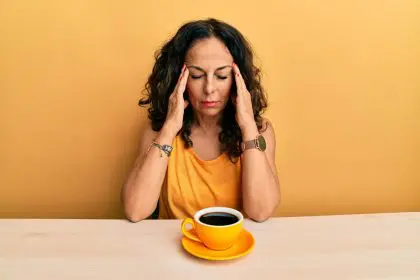For people managing diabetes, understanding sugar content in food extends beyond obvious sources like desserts and sodas. Vegetables, while essential for a healthy diet, can sometimes contain surprising amounts of natural sugars. Knowledge about these hidden sugars helps create better meal plans and maintain stable blood glucose levels.
Understanding natural sugars in vegetables
Natural sugars in vegetables differ from added sugars in processed foods. While these vegetables provide essential nutrients, fiber, and antioxidants, their sugar content requires attention for blood sugar management. The key lies in understanding portion sizes and combining these vegetables strategically with other foods.
1. Sweet and nutrient-rich beets
Beets contain higher sugar levels than many other vegetables, with approximately 9 grams per serving. Their deep red color indicates rich antioxidant content, making them nutritionally valuable despite their sugar content.
Diabetics should consider eating beets in small portions, perhaps sliced thinly in salads or roasted as a side dish. Combining beets with leafy greens or proteins helps moderate their blood sugar impact.
2. Carrots and their natural sweetness
Raw carrots provide about 4 grams of sugar per 100 grams. While this amount increases slightly when cooked, carrots remain a valuable source of vitamin A and fiber.
For better blood sugar management, enjoy raw carrots in controlled portions. Pair them with protein-rich dips like hummus to slow sugar absorption. Avoid overcooked carrots, as this can concentrate their natural sugars.
3. The sweet truth about corn
Fresh corn contains roughly 6 grams of sugar per medium ear. Its starch content also converts to sugar during digestion, affecting blood glucose levels.
Diabetics should treat corn as a carbohydrate-rich food rather than a low-sugar vegetable. Keep portions small and balance with high-fiber vegetables and lean proteins to minimize blood sugar spikes.
4. Sweet potatoes and blood sugar
Despite their name, sweet potatoes offer better glycemic control than regular potatoes. However, they still contain about 6 grams of sugar per 100 grams.
Maximize their benefits by eating the skin for extra fiber and avoiding sweet toppings. Baking or steaming helps maintain their nutrient content while preventing additional sugar concentration.
5. The hidden sweetness in onions
Cooking onions brings out their natural sugars, with one cup of chopped onions containing approximately 9 grams of sugar.
Use onions as a flavoring ingredient rather than a main component of meals. Raw onions have less impact on blood sugar than caramelized versions. Consider using herbs and spices alongside onions for flavor without extra sugar.
6. Small but mighty peas
Green peas pack about 5 grams of sugar per 100 grams, along with protein and fiber. Their compact size makes it easy to overconsume them.
Incorporate peas as part of mixed vegetable dishes rather than serving them alone. Their protein content helps offset their sugar impact when eaten in appropriate portions.
7. Tomatoes and their subtle sweetness
Cherry tomatoes can contain up to 4 grams of sugar per cup. While not extremely high, this amount adds up quickly when eating multiple servings.
Use tomatoes as garnishes or in small amounts in salads. Choose larger slicing tomatoes over cherry varieties for better portion control.
Practical management strategies
Smart meal planning helps incorporate these nutritious vegetables while maintaining stable blood sugar:
Monitor portion sizes carefully, using measuring cups when needed.
Combine higher-sugar vegetables with protein and fiber-rich foods.
Choose cooking methods that don’t concentrate sugars, like steaming or light sautéing.
Track blood glucose responses to different vegetables and adjust portions accordingly.
Creating balanced meals
Successful vegetable incorporation requires thoughtful meal planning:
- Start with a foundation of low-sugar vegetables like leafy greens.
- Add small portions of higher-sugar vegetables for variety and nutrients.
- Include lean proteins and healthy fats to slow sugar absorption.
- Consider timing of meals and medication when including these vegetables.
Looking ahead
Understanding vegetable sugar content empowers better food choices while maintaining a nutritious diet. These vegetables offer valuable nutrients and shouldn’t be eliminated entirely. Instead, focus on portion control and strategic meal planning to enjoy their benefits while managing blood sugar effectively.
This story was created using AI technology.














